
The Booth baronetcy, of Portland Place in the County of London, was created in the Baronetage of the United Kingdom on 27 March 1835 for the gin distiller Sir Felix Booth. [1] This title became extinct on the death of the 3rd Baronet in 1896. [2]

The Booth baronetcy, of Portland Place in the County of London, was created in the Baronetage of the United Kingdom on 27 March 1835 for the gin distiller Sir Felix Booth. [1] This title became extinct on the death of the 3rd Baronet in 1896. [2]

Baron Savile, of Rufford in the County of Nottingham, is a title in the Peerage of the United Kingdom. It was created in 1888 for the diplomat Sir John Savile. He was the eldest of the five illegitimate children of John Lumley-Savile, 8th Earl of Scarbrough, and the grandson of John Lumley-Savile, 7th Earl of Scarbrough. The latter was the fourth of the seven sons of Richard Lumley-Saunderson, 4th Earl of Scarbrough, and his wife Barbara, sister and heiress of the politician Sir George Savile, 8th and last Baronet, of Thornhill, who bequeathed the substantial Savile estates in Yorkshire and Nottinghamshire to his nephew the Hon. Richard Lumley-Saunderson, later 6th Earl of Scarbrough. On his death the estates passed to his younger brother, the aforementioned seventh Earl, and then to his son the eighth Earl. The latter bequeathed the estates to his second natural son Captain Henry Lumley-Savile. When he died they passed to his younger brother Augustus William Lumley-Savile (1829–1887) and then to his eldest brother, the aforementioned John Savile, who was created Baron Savile the following year.
Baron Congleton, of Congleton in the County Palatine of Chester, is a title in the Peerage of the United Kingdom. It was created in 1841 for the Whig politician, former Secretary at War, and Paymaster of the Forces Sir Henry Parnell, 4th Baronet. His eldest son, the second baron, devoted his life to religious work and was an early member of the Plymouth Brethren. The latter was succeeded by his younger brother, the third baron. He served in the Royal Navy and fought at the Battle of Navarino in 1827. His eldest surviving son, the fourth baron, was a major general in the British Army and served in the Crimean War and the Anglo-Zulu War. The latter's eldest son, the fifth baron, was killed in action in Ypres Salient during the First World War and was succeeded by his younger brother, the sixth baron. As of 2015, the titles are held by the latter's grandson, the ninth baron, who succeeded his father in 2015.
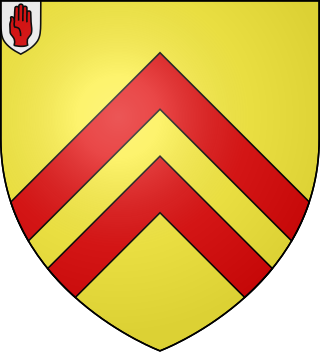
There have been two baronetcies created for members of the Monson family, one in the Baronetage of England and one in the Baronetage of the United Kingdom. One creation is extant as of 2024.
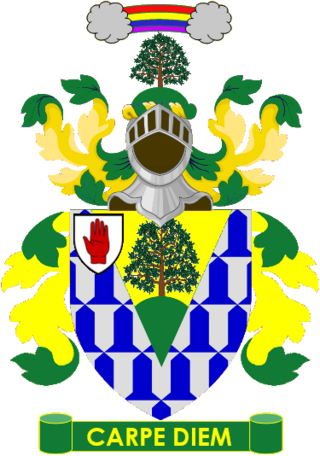
The Wigan Baronetcy, of Clare Lawn in Mortlake in the County of Surrey and Purland Chase in Ross in the County of Hereford, is a title in the Baronetage of the United Kingdom. It was created on 9 March 1898 for Frederick Wigan, a Director of the North London Railway. The presumed 6th Baronet, listed in Debrett's Peerage (2015) as the son of the 5th Baronet, has not successfully proven his succession and is consequently not on the Official Roll of the Baronetage.
The Adair Baronetcy, of Flixton Hall in the County of Suffolk, was a title in the Baronetage of the United Kingdom. It was created on 2 August 1838 for Robert Adair. He was succeeded by his eldest son, the second Baronet. He sat as Member of Parliament for Cambridge. In 1873 he was created Baron Waveney, of South Elmham in the County of Suffolk, in the Peerage of the United Kingdom. The barony became extinct on his death in 1886 while he was succeeded in the baronetcy by his younger brother, Hugh Adair, the third Baronet. The latter had earlier represented Ipswich in Parliament. Two of his sons, the fourth and fifth Baronets, both succeeded in the title. The fifth Baronet's son, the sixth Baronet, was a major general in the British Army. The title became extinct on the latter's death in 1988.
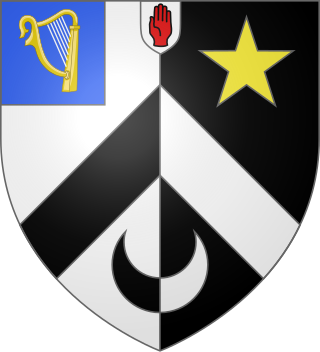
The Alexander, later Cable-Alexander Baronetcy, of the City of Dublin, is a title in the Baronetage of the United Kingdom. It was created on 11 December 1809 for William Alexander, Lord Mayor of Dublin. The second Baronet was a Director of the Bank of Ireland. The third Baronet was Attorney-General to Albert Edward, Prince of Wales, later Edward VII. The seventh Baronet assumed in 1931 by deed poll the additional surname of Cable. As of 31 December 2013 the present Baronet has not successfully proven his succession and is therefore not on the Official Roll of the Baronetage, with the baronetcy considered dormant.
Sir Charles Leolin Forestier-Walker, 1st Baronet, was a Conservative Party politician in the United Kingdom.
The Clay Baronetcy, of Fulwell Lodge in the County of Middlesex, is a title in the Baronetage of the United Kingdom. It was created in 1841 for William Clay, Member of Parliament for Tower Hamlets from 1832 to 1857 and Secretary to the Board of Control from 1839 to 1841. He was the son of George Clay, a prominent London merchant and shipowner.
There have been two baronetcies created for members of the Baring family, one in the Baronetage of Great Britain and one in the Baronetage of the United Kingdom.
There have been seven baronetcies created for persons with the surname Edwards, three in the Baronetage of England and four in the Baronetage of the United Kingdom. Only one creation is extant as of 2007.

The Wraxall Baronetcy, of Wraxall in the County of Somerset, is a title in the Baronetage of the United Kingdom. It was created on 21 December 1813 for Nathaniel Wraxall. He was in the East India Company Civil Service, an author and member of parliament for Hindon, Ludgershall and Wallingford. His grandson, the third Baronet, was an author.
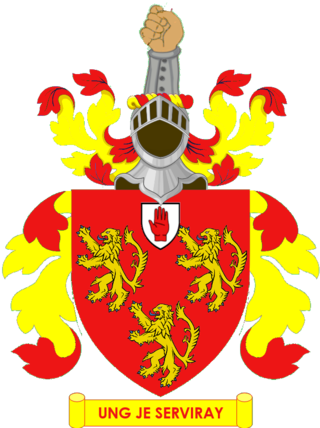
The FitzHerbert baronetcy, of Tissington in the County of Derby, is a title in the Baronetage of Great Britain. It was created on 22 January 1784 for William FitzHerbert, of Tissington Hall, Derbyshire.
The Hort Baronetcy, of Castle Strange in the County of Middlesex, is a title in the Baronetage of Great Britain. It was created on 8 September 1767 for John Hort, Consul-General at Lisbon, Portugal. He was the second son of The Right Reverend Josiah Hort, Archbishop of Tuam. The second Baronet sat as Member of Parliament for Kildare from 1831 to 1832. The third Baronet was a Lieutenant-General in the British Army and fought in the Crimean War. The current Baronet is Sir Andrew Edwin Fenton Hort, of East Prawle, Devon.

The Geary Baronetcy, of Oxenheath in the County of Kent, was a title in the Baronetage of Great Britain. It was created on 17 August 1782 for Francis Geary, an admiral in the Royal Navy. His eldest son and heir, also called Francis Geary, fought in the American War of Independence and was killed in an ambush in 1776. The baronetcy therefore passed directly to Admiral Geary's second son, Sir William Geary, who served as Member of Parliament for Kent between 1796 and 1806, and again between 1812 and 1818. The third Baronet, Sir William Geary, served as MP for a successor constituency, West Kent, from 1835 until 1838. The baronetcy became extinct on the death of the fifth Baronet, Sir William Geary, in 1944.
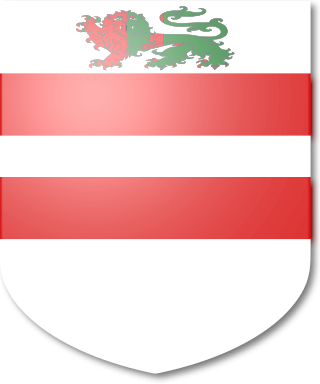
The Burnaby Baronetcy, of Broughton Hall in the County of Oxford, was a title in the Baronetage of Great Britain. It was created on 31 October 1767 for Vice-Admiral Sir William Burnaby, High Sheriff of Oxfordshire in 1756. He was the son of John Burnaby, Ambassador to Sweden.
The Domville Baronetcy, of St Alban's in the County of Hertford, was a title in the Baronetage of the United Kingdom. It was created on 28 July 1814 for William Domville, Lord Mayor of London from 1813 to 1814. He was a descendant of William Domville, elder brother of Gilbert Domvile, ancestor of the Domvile baronets of Tempoleogue. The title became extinct on the death of the seventh Baronet in 1981.
General Edward Charles John Stopford Claremont CB was a British soldier who was the United Kingdom's first military attaché, holding the post in Paris for 25 years.

Earl of Arran is a title in the Peerage of Ireland. It is not to be confused with the title Earl of Arran in the Peerage of Scotland. The two titles refer to different places: the Aran Islands in Ireland, and the Isle of Arran in Scotland. The Irish earldom is held by the Gore family. The Scottish earldom is a separate title, held as a subsidiary title of the Duke of Hamilton.

The Blackwood baronetcy, of the Navy, was created in the Baronetage of the United Kingdom on 1 September 1814 for the Honourable Henry Blackwood, seventh son of Sir John Blackwood, 2nd Baronet and of Dorcas Blackwood, 1st Baroness Dufferin and Claneboye. He was a Vice-Admiral of the Blue in the Royal Navy and was the bearer of despatches announcing the victory of Trafalgar in 1805. The 7th Baronet succeeded as 10th Baron Dufferin and Claneboye and 11th Baronet of Killyleagh in 1988.
The Baillie baronetcy, of Polkemmet in the County of Linlithgow, was created in the Baronetage of the United Kingdom on 14 November 1823 for William Baillie. He was the son of William Baillie, Lord Polkemmet, a Lord of Session. The family seat was Polkemmet House near Whitburn, West Lothian.